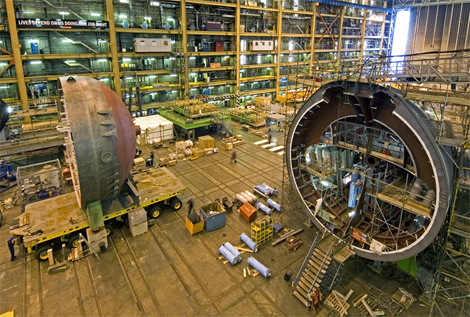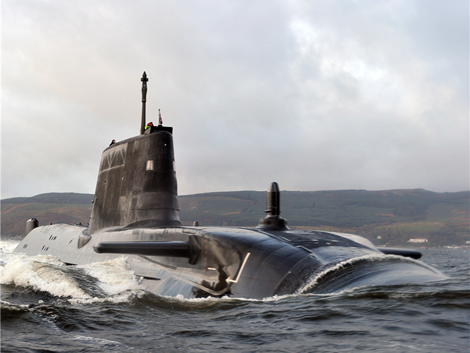
If you want to talk about managing complex products and managing a complex lifecycle, it doesn’t get much more complex than submarine design, particularly in the defence industry. Take BAE Systems Submarine Solutions and its Astute class nuclear submarine. Having survived the governments spending cuts, it seems that the Barrow in Furness shipyard will be busy for the next 10 years, designing and building much of the next generation of the UK’s nuclear capability.

Whatever your thoughts on the use of nuclear in the defence world, the Astute class is an engineering marvel. The pressure hull is a 97 metre long cylinder which when submerged must withstand pressure equivalent to 400 family saloon cars weighing down on every square metre of surface area. It has over one million components, including 100km of cabling and 23,000 pipes, stretching 10km. When fully stored Astute will displace 7,400 tonnes of sea water, equivalent to 925 unladen London buses. HMS Ambush could travel around the world underwater for 25 years thanks to its Rolls-Royce nuclear reactor, sonar systems and ability to convert salt water into oxygen and drinking water (thought it would need to resurface every three months for other supplies). It’s also one of the first nuclear submarines to be designed entirely in a three-dimensional, computer-aided environment.
So, how do they manage such a big project, particularly when they’re working on the next generation of the British Government’s nuclear programme (I can’t quite bring myself to call it a deterrent)?
News out of Siemens this morning is that they’ll be doing it using Teamcenter. BAE business group signed a contract in March of this year to standardise on Teamcenter for the development of its next generation submarine with the goal of driving “productivity improvements, establish common processes and enhance global collaboration across the lifecycle of this important new programme.”

According to the release, Teamcenter “will serve as the information backbone of BAE Systems’ product development process, managing all of the information generated and needed to design, build, commission and support a nuclear submarine. The Teamcenter deployment supports a business strategy vision which seeks to ensure that BAE Systems can reliably, predictably and affordably deliver submarines to the Royal Navy. The UK future nuclear deterrent programme recently passed its decision point allowing the work to proceed to full design.
“BAE Systems decided to deploy a PLM approach to the future nuclear deterrent submarine programme as part of developing an Integrated Product Delivery Environment (IPDE), which will enable the design process to be managed more effectively and predictably, in what is one of the most challenging new product programmes in UK industry today,” said Tony Johns, BAE Systems’ Future Submarines Director. “To support this approach, we conducted a thorough selection process which concluded in nominating Siemens PLM Software’s Teamcenter as the strategic PLM tool. Siemens PLM Software proved to be the best vendor for BAE Systems to partner with, and we are very pleased to leverage their skill and experience in PLM toolsets and methodologies for the benefit of this programme.”






